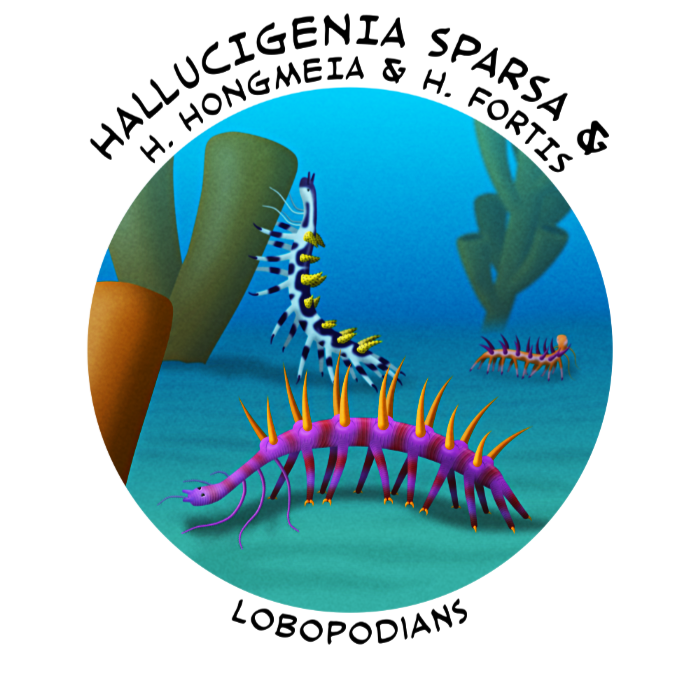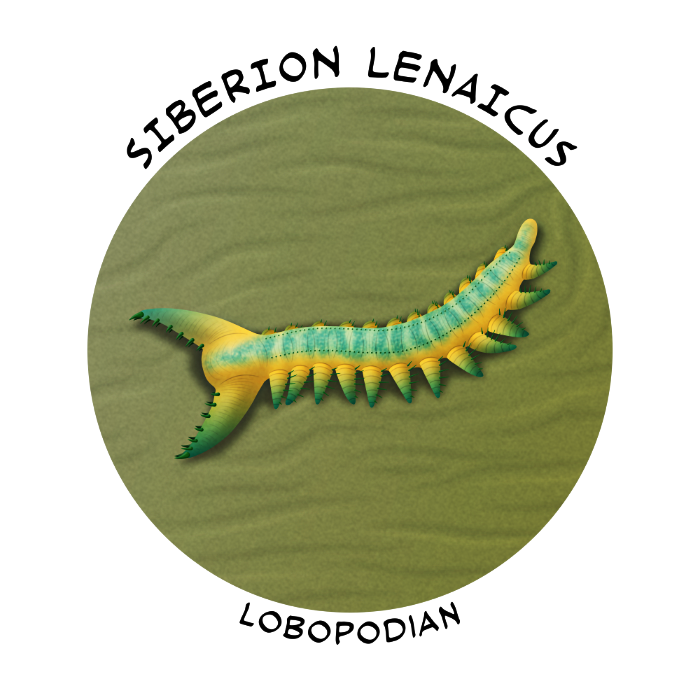The earliest panarthropods were the lobopodians, small soft-bodied segmented worm-like animals with many pairs of legs, usually tipped with claws, and sometimes elaborate ornamentation on their bodies such as spikes, armor plates, and fleshy bumps.
Since they occupy a basal position among panarthropods it’s likely they weren’t really a distinct lineage or phylum, and were probably more of an “evolutionary grade” of various weird early forms, with tardigrades, velvet worms, and potentially all other arthropods descending from somewhere among their ranks.
While little is known about their lifestyles they seem to have had a wide range of ecological roles, including predators, grazers, scavengers, and even filter-feeders. They’re mostly known from around the world in the mid-Cambrian, but fossils from over 200 million years later in the late Carboniferous (~310 million years ago) hint that these panarthropods may actually have been successful elements of Paleozoic marine ecosystems for a very long time.
There’s a whole iceberg of weirdness and mystery surrounding these animals and I can’t possibly do them all justice in only a couple of days. So we’ll just have to take a quick look at a few of them before moving on.

The most famous lobopodian is, of course, Hallucigenia sparsa.
Discovered in the Canadian Burgess Shale deposits (~508 million years ago), it was initially reconstructed in the 1970s upside-down and back-to-front, depicted as a strange alien-looking creature that walked on stilt-like spikes and had a single row of tentacles along its back – and inspiring its name due to its “bizarre and dream-like quality“.
But further discoveries of similar Cambrian lobopodians hinted at its true identity as a relative of velvet worms and other early panarthropods, and in the 1990s closer inspection of the Hallucigenia specimens revealed a second row of the strange “tentacles”, confirming they were actually legs.
Up to about 5cm long (2″), it had 7 pairs of slender clawed legs and 7 pairs of long sharply-pointed spines along its back. An elongated head and neck region bore a mouth with a throat ringed with tiny teeth, a pair of simple eyes, and three long thin tendril-like appendages that probably served a sensory or feeding function. A small pair of antennae may also have been present, which currently-unpublished research has suggested could have been a sexually dimorphic feature, more prominent in males.
Further fossils of Hallucigenia sparsa have been found in the older Chinese Chengjiang fossil deposits (~518 million years ago), along with two other closely related species:
Hallucigenia hongmeia was about 3cm long (1.2″), with 8 pairs of legs, each ending in a single long claw, and stubbier, more curved spines. Net-like holes in the surface of its spines suggest it may have had numerous fleshy outgrowths projecting through them, possibly for sensory or camouflage purposes.
Hallucigenia fortis was the smallest of the three, about 1.5cm long (0.6″). It had 8 pairs of legs and curved spines, and seems to have had a more bulbous head than its relatives.
Isolated Hallucigenia-like spines have also been found in Cambrian rocks all around the world, suggesting this type of lobopodian was especially widespread and numerous.

Siberion lenaicus was a lobopodian known from the Sinsk biota of Eastern Russia (~513 million years ago).
About 7cm long (2.75″), it appears to occupy a transitional point between the walking worm-like lobopodians and the swimming “gilled lobopodian” dinocaridids. It had a fairly chunky body and spiny limbs, a stubby “tail” region, and what may have been rows of bumpy ornamentation along its back. Large grasping appendages on each side of its head were probably adapted for a predatory lifestyle, and might have provided the anatomical basis for the evolution of the highly specialized “great appendages” of the “gilled lobopodians” and radiodonts.
Two other closely related “siberiid” lobopodians are known from China, but only two specimens of Siberion itself have ever been found. And sadly it’s unlikely any more ever will be – the site it originally came from has been completely destroyed by commercial fossil hunters.
